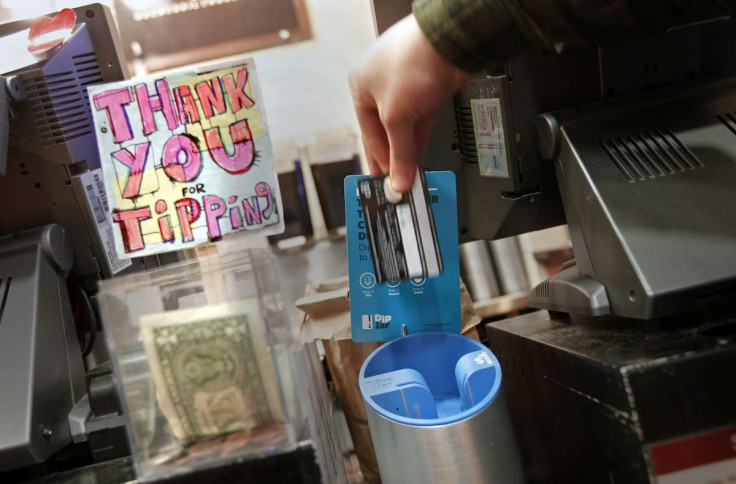How Much Should You Tip Abroad? Study Reveals Brits Have No Idea What To Do In US, Canada

It’s one of the most nerve-wracking elements of travel abroad: How much should you tip?
North Americans, used to gratuities that can reach 20 percent or more at home, tend to be some of the best tippers abroad, particularly in Europe, where such generous tips are rare. But a new survey from UK-based International Currency Exchange found that Britons crossing the Atlantic tend to have much tighter fists on their money.
“Tipping etiquette seems to take many of us outside our comfort zone,” explained Tom Johnson, head of ICE Online Business. “While most respondents (from the UK) tend to use a 10 percent rule of thumb, it was surprising to see that so many tip 5 percent or less. This is well below what’s expected in some parts of the USA and Canada, where tips can be in the region of 20 percent. That’s £200 out of a budget of £1,000, making it a serious expense.”
ICE’s survey of 2,000 travelers found that the etiquette of tipping is often a source of mystery and embarrassment. Nearly 40 percent admitted that they found tipping awkward and squirmed at the idea of when and how to do it, while almost one in three confessed they often had absolutely no idea how much to tip in a destination.
How much of it is ignorance and how much of it is frugality is up for debate. One in three Britons admitted to tipping just 5 percent or less, while one in seven said they never tipped at all.
ICE found a stark divide between whom British tourists tipped and whom they did not. Porters, room service staff and restaurant workers fared better, while taxi drivers, beauticians and, most notably, bar staff got the short end of the stick.
There was also a clear generational divide among those who tipped (and tipped big) and those who did not. Travelers between the ages of 25 and 34 were the biggest tippers, while those over 60 tended to tip much more conservatively. The average Briton tipped about £75 ($120) altogether on a trip, but among the over-60s this dropped to just £33 ($53).
“Rather than having to stretch your holiday budget, it makes sense to factor in tips when working out costs, particularly if you are traveling to North America,” Johnson advised. “Ensure you have enough small change to tip when you first arrive by requesting some low-value denominations when you order your travel money, and shop around for competitive rates online rather than leave it to the last minute. A bit of planning can help make the holiday spending budget that bit further.”
More than 40 percent of respondents in the ICE study admitted that they did not factor tipping into their budget, while nearly half said they always aimed in the region of 10 percent -- even if traveling to North America. Surprisingly, most seemed to get away with leaving minimal gratuities. Only one in 10 were confronted for not tipping enough, though that may have to do with the fact that a quarter of respondents secretly added tips for friends and family out of embarrassment.
A Quick Guide To Tipping In North America And Europe
USA
Restaurant: 15 to 20 percent
Bar: $1 basic drinks, $2 fancy cocktails
Taxi: 10 to 15 percent
Hotel Porter: $1 to $2 per bag
Canada
Restaurant: 15 percent
Bar: $1 basic drinks, $2 fancy cocktails
Taxi: 10 percent
Hotel Porter: $1 to $2 per bag
UK
Restaurant: 10 percent if no service charge
Bar: Not customary, but welcomed
Taxi: 15 percent
Hotel Porter: $1 per bag
France
Restaurant: 5 to 10 percent
Bar: Not customary, but welcomed
Taxi: Round up
Hotel Porter: $1 per bag
Germany
Restaurant: 5 to 10 percent
Bar: 2 to 5 percent of final bill
Taxi: Round up
Hotel Porter: $1 per bag
Italy
Restaurant: 10 percent in addition to service charge
Bar: Not customary, but welcomed
Taxi: Round up
Hotel Porter: $1 per bag
Spain
Restaurant: 7 to 10 percent in addition to service charge
Bar: Not customary, but welcomed
Taxi: 10 percent
Hotel Porter: $1 per bag
© Copyright IBTimes 2024. All rights reserved.






















